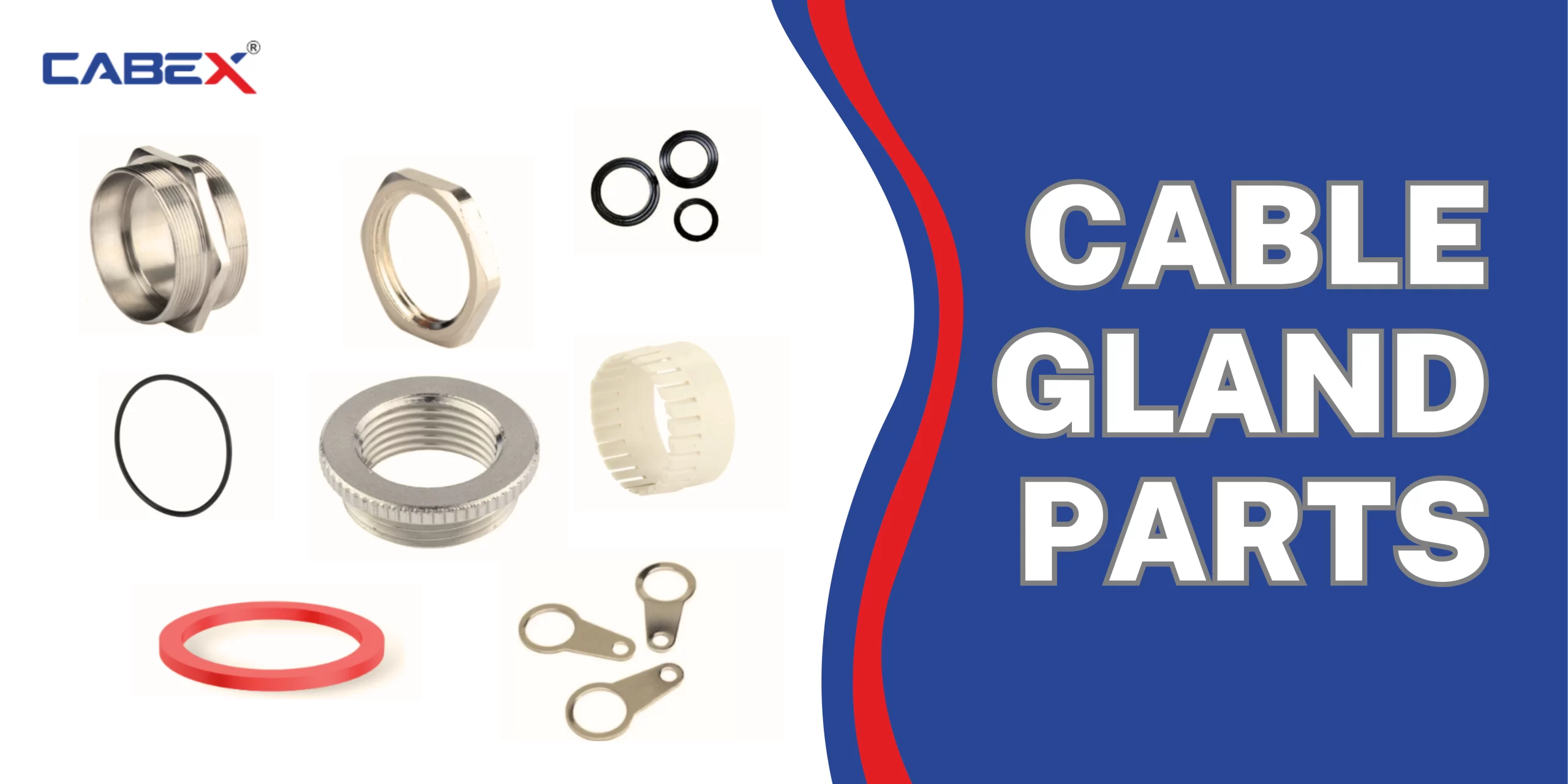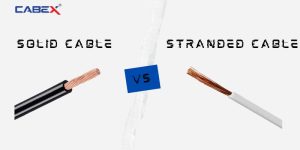Introduction
Cable glands are essential components used in electrical and mechanical installations to ensure proper cable entry and sealing. They provide a safe and reliable connection between cables and equipment, protecting them from external elements and maintaining the integrity of the installation. To better understand cable glands, it’s important to be familiar with the various parts that make up these devices. In this blog post, we will explore the names and functions of the different cable gland parts.
Need Expert Cable Gland Solutions?
Ensure safety and durability in hazardous environments with our range of Explosion Proof Cable Glands, Industrial Cable Glands, and comprehensive Explosion Protection solutions.
Explore now:
Types of Cable Gland
Before anything else, you need to grasp the concept that there exist two distinct variations of cable glands:
- Single compression cable gland
- Double compression cable gland
Each of these types features a unique assortment of components.
What is a Single Compression Cable Gland?
A single compression cable gland is a type of cable gland designed to provide secure and reliable sealing for cables in various applications. It consists of a single compression seal that is used to create a tight and watertight seal around the cable, preventing the entry of dust, moisture, or other contaminants. The cable is inserted through the gland, and the compression seal is tightened to grip the cable and form a tight seal. Single compression cable glands are commonly used in industries such as electrical, telecommunications, and automation, where cable entry points need to be protected and sealed effectively.

Single Compression Cable gland parts name include:
- gland body nut
- gland body
- flat washer
- lock nut
- rubber washer
- rubber seal
- neoprene
What is Double Compression Cable Gland?
A double compression cable gland is another type of cable gland that is specifically designed to provide enhanced sealing and strain relief for cables. It features two compression seals instead of one, offering an extra layer of protection and stability.
The double compression cable gland works by first inserting the cable through the gland. Then, the outer compression seal is tightened to secure the cable in place. After that, the inner compression seal is further tightened, providing an additional layer of compression and sealing around the cable. This double compression mechanism ensures a more robust and reliable seal, making it suitable for applications where there is a higher risk of environmental factors like moisture, dust, or vibrations.
Double compression cable glands are commonly used in demanding environments such as industrial settings, marine applications, outdoor installations, or any situation where cables need superior protection against external elements and mechanical stress. They provide increased reliability and peace of mind in ensuring the integrity and longevity of cable connections.

Double Compression Cable gland parts name include:
- check nut
- neoprene rubber seal
- cone ring
- cone
- gland body nut and;
- gland body
Complete Name of Cable Gland Parts
Here are the complete cable gland parts name:
Cable Gland Body
This is the main body or housing of the cable gland that encloses and protects the cable termination.

Locknut
The lock nuts is a threaded nut that secures the cable gland body to the equipment or enclosure. It provides mechanical stability and prevents the gland from loosening due to vibrations or external forces.

Sealing Ring/O-Ring
The sealing ring or O-ring is a rubber or elastomeric ring placed inside the cable gland body. It provides a watertight or dustproof seal around the cable, protecting against ingress of moisture, dust, or other contaminants.

Cable Gland Adaptor
A cable gland adaptor, also known as a cable gland reducer or cable gland adapter, is a component used in cable gland assemblies to enable the connection of cables with different sizes or types to the equipment or enclosure. It acts as an intermediary piece that bridges the gap between the cable gland and the cable.

Claw/Compression Gland
The claw or compression gland is the component responsible for gripping the outer sheath or jacket of the cable. It provides strain relief and prevents the cable from being pulled out of the gland.

Entry Thread
The entry thread is the threaded portion of the cable gland body where the cable is inserted. It allows the cable to pass through and provides a connection point for the claw or compression gland.

Gland Washer
The gland washer is a flat washer placed between the cable gland body and the equipment or enclosure. It provides additional sealing and protects the mating surface from damage.

Earth Tag
Some cable glands may include an earth tag or grounding plate. This component provides a connection point for grounding the cable to prevent electrical hazards.

Cable Gland Conduit Fittings
Cable gland conduit fittings, also known as cable gland adapters or cable gland reducers, are components used to connect cable glands to conduits or flexible conduits. They provide a secure and sealed transition between the cable gland and the conduit system, allowing cables to be routed and protected within the conduit.
These fittings typically have two ends with different sizes or thread types. One end is designed to match the thread size and type of the cable gland, while the other end is compatible with the conduit or flexible conduit. The fitting acts as an intermediary piece that joins the two components together, ensuring a proper connection and maintaining the integrity of the cable system.
Cable Gland Caps
Cable gland caps, also known as cable gland covers or cable gland sealing caps, are protective components used to seal and cover the open end of a cable gland. They are typically used when a cable gland is not in use or when a cable termination needs temporary or permanent protection.
The cable gland cap is designed to fit over the exposed threads and opening of the cable gland body, providing a barrier against dust, moisture, and other environmental elements. It helps to maintain the integrity of the cable gland and prevent the ingress of contaminants that could potentially compromise the cable termination or the equipment it is connected to.
Cable gland caps are often made of durable materials such as plastic, rubber, or metal, depending on the application requirements. They may feature a threaded design or a snap-on mechanism for easy installation and removal.

Conclusion
Cable glands are vital components in electrical and mechanical installations, ensuring the safe and reliable connection of cables to equipment. Understanding the different parts of cable glands is crucial for proper installation and maintenance. In this blog post, we explored the names and functions of key cable gland parts, including the body, locknut, sealing ring, cable clamp, earth tag, entry thread, and various accessories. We have provided you with essential information about the components that make up a cable gland.






